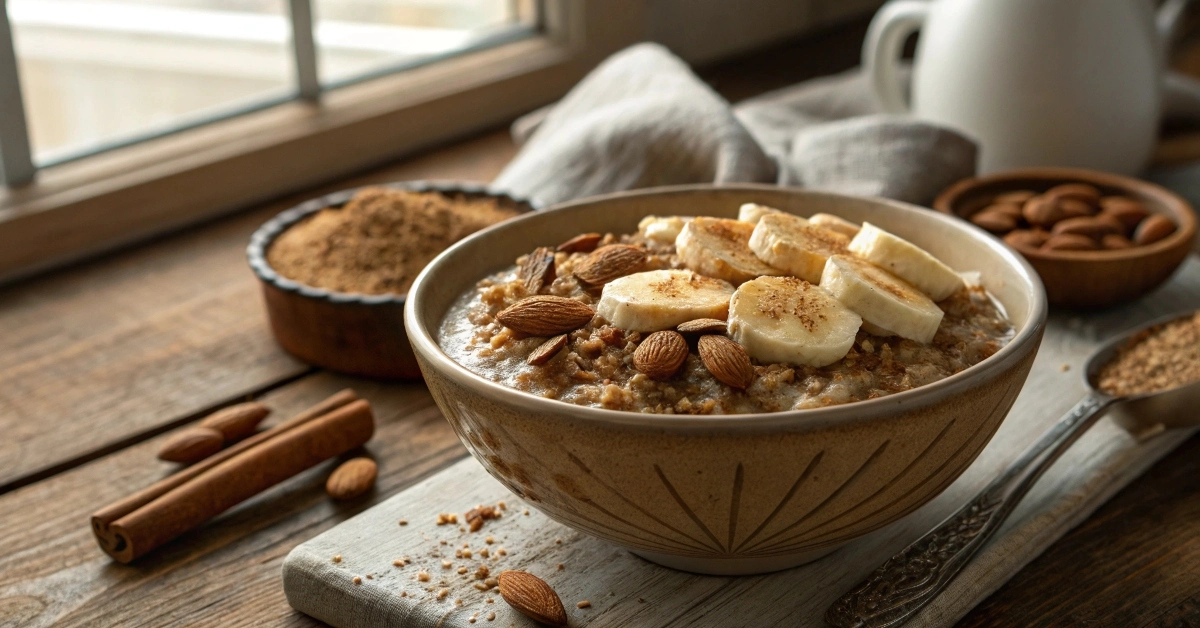Buckwheat recipes are making waves in kitchens across the U.S. as more people seek out healthy, gluten-free, and nutrient-packed meal options. Whether you’re new to buckwheat or already love its earthy flavor, this ancient seed offers incredible versatility—from hearty breakfasts to satisfying dinners and even desserts. In this guide, we’ll break down the best ways to cook with buckwheat, share easy recipes, and help you understand why this powerhouse ingredient should be a pantry staple.
Check out our top-rated buckwheat bread recipe if you’re looking for a wholesome, homemade gluten-free loaf.
Introduction to Buckwheat and Why It Deserves a Spot in Your Pantry
What is Buckwheat? History and Overview
Despite its misleading name, buckwheat isn’t wheat—it’s a seed from a flowering plant related to rhubarb. Naturally gluten-free and rich in nutrients, it has been used in traditional dishes across Asia and Eastern Europe for centuries. Today, it’s gaining massive popularity in Western diets, especially for those avoiding gluten or processed grains.
Buckwheat comes in several forms: groats, flour, flakes, and noodles (like Japanese soba). Each version opens the door to different buckwheat recipes with unique textures and uses.
Nutritional Benefits of Buckwheat vs. Common Grains
Here’s why buckwheat stands out from conventional grains:
| Nutrient | Per 100g (Cooked) | Buckwheat vs. Oats | Buckwheat vs. Rice |
|---|---|---|---|
| Protein | 3.4g | Similar | Higher |
| Fiber | 2.7g | Slightly Less | Higher |
| Magnesium | 51mg | Higher | Much Higher |
| Antioxidants | High | Moderate | Low |
| Gluten Content | 0g | 0g | Varies |
In addition to being rich in fiber and protein, buckwheat contains essential nutrients like magnesium, copper, and manganese. It also boasts rutin, an antioxidant known for reducing inflammation and supporting heart health.
Why Buckwheat Recipes Are Trending in Health-Conscious Kitchens
More people are turning to buckwheat recipes because they check all the right boxes: they’re filling, allergy-friendly, and easy to prepare. Whether you’re going plant-based, gluten-free, or simply want healthier carbs, buckwheat adapts beautifully to any diet.
Plus, it only takes about 10–15 minutes to cook. That makes it perfect for quick meals like breakfast porridge, grain bowls, or even gluten-free baking.
Discover great ideas like healthy egg white burger buns that pair well with savory buckwheat dishes.
Top Buckwheat Recipes for Breakfast Lovers
Buckwheat Pancakes, Granola, and Porridge Recipes
Mornings just got better with these nutrient-packed buckwheat recipes. Whether you’re craving something warm and comforting or crisp and crunchy, buckwheat can easily replace traditional grains in your breakfast routine.
1. Buckwheat Pancakes:
These gluten-free pancakes are light, nutty, and fluffy. Combine buckwheat flour with almond milk, eggs (or flaxseed for vegan options), and a pinch of baking powder. Top them with berries, Greek yogurt, or maple syrup.
2. Buckwheat Granola:
Roast buckwheat groats with coconut oil, cinnamon, nuts, and honey until golden and crunchy. It’s the perfect high-fiber topping for yogurt or smoothie bowls.
3. Creamy Buckwheat Porridge:
Simmer buckwheat groats in milk or plant-based alternatives, then stir in vanilla, banana slices, and chia seeds. A satisfying, warming breakfast you can prep in advance.
Looking for inspiration? Try edamame egg salad for a protein-packed side you can enjoy with buckwheat toast.
How to Make Gluten-Free Buckwheat Waffles with Fruit
Want something crispy on the outside and soft on the inside? Buckwheat waffles are your go-to. They’re naturally gluten-free and make an excellent base for both sweet and savory toppings.
Here’s a simple recipe:
- 1 cup buckwheat flour
- 1 egg or flax egg
- 1 cup milk (any type)
- 2 tbsp coconut oil
- 1 tsp baking soda + 1 tsp vinegar for lift
Mix everything and pour into a waffle iron. Serve with berries, almond butter, or even a poached egg for a sweet-savory fusion.
These waffles freeze well too, making them ideal for busy mornings.
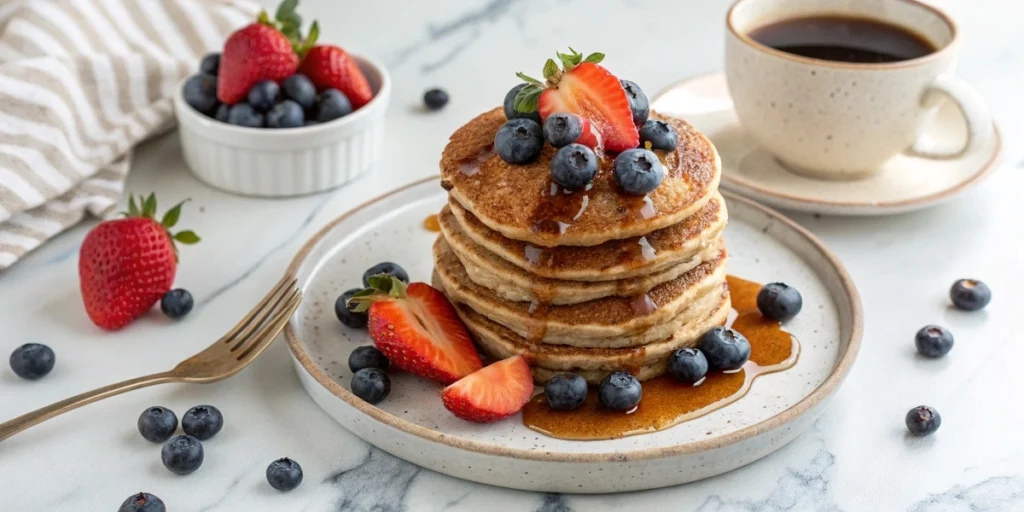
Savory Buckwheat Recipes for Lunch and Dinner
Best Buckwheat Salad with Roasted Veggies
If you’re craving a light but filling lunch, buckwheat recipes like a warm grain salad hit the mark. Buckwheat holds its shape well after cooking, making it ideal for salads that don’t go soggy.
Roasted Veggie Buckwheat Salad:
- Base: Cooked buckwheat groats (chilled or warm)
- Veggies: Roasted sweet potatoes, zucchini, bell peppers
- Add-ins: Feta cheese, pumpkin seeds, cranberries
- Dressing: Olive oil, lemon juice, Dijon mustard, garlic
Toss everything together and enjoy warm or cold. You can easily prep this ahead for quick weekday lunches.
Check out cabbage and egg recipes for another budget-friendly and filling plant-based lunch idea.
Buckwheat Pilaf and Stir-Fry Ideas
Buckwheat is an underrated grain for savory mains. It’s quick to cook, so it’s perfect for weeknight meals.
1. Buckwheat Pilaf:
Sauté onions and garlic in olive oil, then stir in buckwheat groats. Add vegetable or chicken broth, and simmer until fluffy. Toss in cooked mushrooms, spinach, and herbs for a hearty grain dish.
2. Buckwheat Stir-Fry:
Use buckwheat as your base instead of rice. Add stir-fried veggies like broccoli, carrots, and snap peas. Flavor it with soy sauce, sesame oil, and a dash of sriracha.
Want protein? Add grilled tofu, tempeh, or eggs.
These meals are not only fast—they’re great for using up leftover vegetables, too. One-pot dishes like these make healthy eating way more convenient.
Gluten-Free Baking with Buckwheat Flour
How to Bake Fluffy Buckwheat Bread
If you’ve been searching for gluten-free buckwheat recipes, homemade bread is a fantastic place to start. Buckwheat flour has a deep, earthy flavor and creates a dense but satisfying loaf—ideal for toast, sandwiches, or dipping in soup.
Here’s a simple recipe to try:
Basic Buckwheat Bread
- 1 ½ cups buckwheat flour
- ½ cup almond flour or oat flour
- 1 tbsp psyllium husk (for binding)
- 1 tsp baking soda
- 1 tbsp apple cider vinegar
- 1 ¼ cups water
- Pinch of salt
Mix dry ingredients, add wet ingredients, stir until smooth, and bake in a loaf pan at 350°F for 50–60 minutes. Let it cool completely before slicing to preserve the structure.
This recipe is:
- Gluten-free
- Dairy-free
- Vegan-friendly
- High in plant-based protein
Learn more about making perfect buckwheat bread that’s flavorful, soft, and naturally gluten-free.
Buckwheat Muffins, Cookies, and Brownies
One reason so many health-conscious bakers love buckwheat recipes is their versatility in sweet treats. You can enjoy dessert without compromising on nutrition or flavor.
1. Buckwheat Banana Muffins
Use mashed bananas, buckwheat flour, maple syrup, baking soda, and eggs (or flax eggs). These muffins come out soft and moist, with just the right amount of natural sweetness.
2. Chocolate Buckwheat Brownies
Rich and fudgy, these brownies use buckwheat flour, cocoa powder, eggs, coconut oil, and dark chocolate chips. The result? A gluten-free dessert that tastes decadent but nourishes too.
3. Buckwheat Peanut Butter Cookies
These are simple and satisfying. Combine buckwheat flour, peanut butter, vanilla, and a little coconut sugar. Bake until golden for crisp edges and chewy centers.
Each of these buckwheat recipes proves that gluten-free baking doesn’t mean sacrificing quality. Buckwheat pairs wonderfully with chocolate, fruit, and spices, creating baked goods that are both wholesome and delicious.
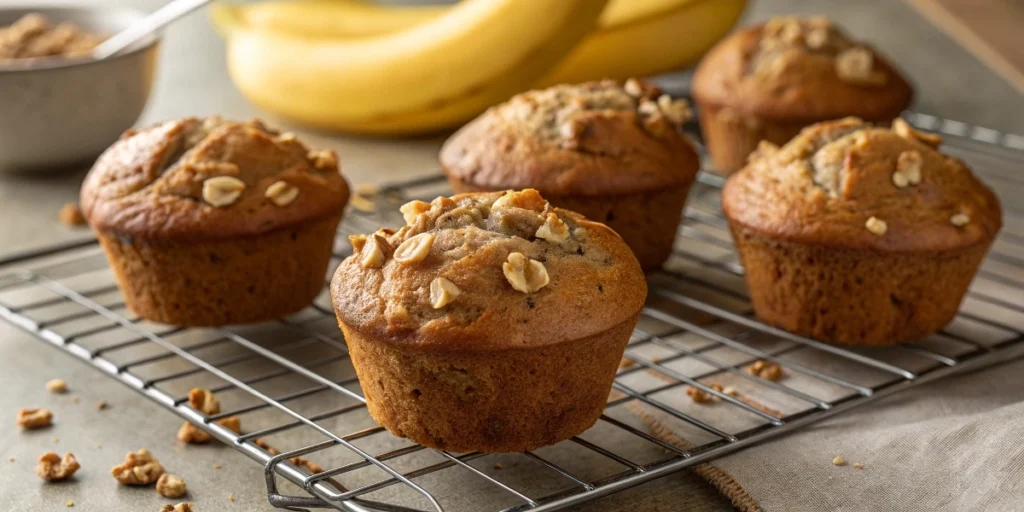
Sweet Treats Using Buckwheat
Dessert Recipes: Buckwheat Crepes, Pancakes, and Energy Balls
If you thought buckwheat recipes were just for bread and savory dishes, think again. Buckwheat flour and groats can be the base for some truly satisfying desserts. These sweet treats are not only delicious but also gluten-free, fiber-rich, and packed with nutrients.
1. Buckwheat Crepes
These thin, delicate crepes are easy to make and totally wheat-free. Use buckwheat flour, eggs or flax eggs, milk (dairy or plant-based), and a pinch of vanilla. Fill them with Greek yogurt, fresh berries, or a drizzle of honey for a light dessert—or even breakfast.
2. Chocolate Buckwheat Pancakes
For a richer, fluffier take on traditional pancakes, blend buckwheat flour with mashed banana, eggs, a spoonful of cocoa powder, and baking soda. Top with almond butter and dark chocolate chips for a naturally sweet finish.
3. No-Bake Buckwheat Energy Balls
One of the simplest buckwheat recipes around, these bite-sized snacks are perfect for on-the-go. Toast groats for crunch, then mix with dates, almond butter, chia seeds, and a sprinkle of cinnamon. Roll into balls and chill until firm.
These recipes make it easy to enjoy desserts with clean ingredients and balanced macros.
Looking for inspiration? Try our cabbage and egg recipes for savory sides that pair well with light sweet treats like buckwheat crepes.
Using Buckwheat in Smoothies and Snack Bars
Some of the most creative buckwheat recipes involve no cooking at all. Buckwheat groats can be soaked, blended, or toasted to add crunch and protein to your favorite snack staples.
1. Buckwheat Smoothie Booster
Soaked groats blend easily into smoothies, giving them a creamy, satisfying base without dairy or protein powders. They pair especially well with banana, cacao, and nut butter.
2. DIY Buckwheat Snack Bars
Toasted groats combine with oats, seeds, and dried fruit for a chewy, high-fiber snack. Mix with a binder like almond butter and honey, then press into a pan and refrigerate until firm.
Snack bars like these are great for lunchboxes, post-workout fuel, or an afternoon pick-me-up. They’re also a smart way to use leftover groats from other buckwheat-based meals.
Is Buckwheat Healthier Than Rice and Oatmeal?
Buckwheat vs. Oatmeal: Nutrient Comparison
Among the most searched buckwheat recipes are breakfast options—mainly because many people compare it to oatmeal. Both are wholesome, filling, and gluten-free (if sourced properly), but buckwheat stands out in several nutritional categories.
Let’s compare them:
| Nutrient (per 100g cooked) | Buckwheat | Oatmeal | Which Wins |
|---|---|---|---|
| Calories | 92 | 71 | Oatmeal (slightly) |
| Protein | 3.4g | 2.5g | Buckwheat |
| Fiber | 2.7g | 1.7g | Buckwheat |
| Magnesium | 51mg | 26mg | Buckwheat |
| Glycemic Index | Low | Medium | Buckwheat |
| Gluten Content | 0g | 0g* | Both (if gluten-free certified) |
*Note: Oats are naturally gluten-free but may be contaminated during processing unless labeled certified gluten-free.
If you’re looking for a breakfast that’s more nutrient-dense and filling, buckwheat recipes like porridge or pancakes are a great swap for traditional oatmeal.
Check out why add spinach to eggs for a nutritious side to pair with a bowl of creamy buckwheat porridge.
Is Buckwheat Better Than White or Brown Rice?
Let’s dig deeper. How does buckwheat measure up to one of the most common staples—rice?
| Nutrient (per 100g cooked) | Buckwheat | White Rice | Brown Rice |
|---|---|---|---|
| Calories | 92 | 130 | 111 |
| Protein | 3.4g | 2.7g | 2.6g |
| Fiber | 2.7g | 0.4g | 1.8g |
| Magnesium | 51mg | 13mg | 39mg |
| Glycemic Index | Low | High | Medium |
While white rice is more calorie-dense and less nutritious, brown rice gets closer—but still falls short of buckwheat in both fiber and mineral content.
Thanks to its higher protein and lower glycemic impact, buckwheat recipes are a smart choice for people watching their blood sugar or trying to stay fuller longer.
Plus, buckwheat cooks fast—usually in under 15 minutes—which gives it a practical edge for quick lunches or weeknight dinners.
Pros and Cons of Buckwheat You Should Know
Digestive Benefits and Allergy Considerations
Buckwheat recipes are celebrated for their health benefits, but like any food, there are both upsides and potential drawbacks to consider. From digestion to allergies, here’s what you need to know before fully stocking your pantry.
First, the good news: buckwheat is naturally gluten-free and easy on the digestive system. It’s rich in insoluble fiber, which promotes regularity, helps reduce bloating, and feeds beneficial gut bacteria. Many people with sensitive stomachs or gluten intolerance find relief by replacing grains with buckwheat recipes.
It’s also a safe choice for people with celiac disease or wheat allergies, as buckwheat isn’t related to wheat at all. However, some people—especially in countries where it’s consumed frequently—may develop an allergy to buckwheat. This is rare but can result in skin irritation or digestive distress.
Phytic acid, a natural compound found in buckwheat, can reduce mineral absorption when eaten in excess. To avoid this, soak or toast groats before cooking—a simple preparation step that improves digestion and boosts nutrition.
Check out our healthy egg white burger buns for a light and gut-friendly pairing with buckwheat salads or bowls.
Environmental Impact and Sourcing Tips
Another reason people love buckwheat recipes is their eco-friendly footprint. Buckwheat grows fast, needs minimal water, and doesn’t require heavy pesticide use. It’s even used by organic farmers as a cover crop to improve soil and attract pollinators like bees.
Still, sourcing matters. When shopping for buckwheat:
- Choose organic to avoid pesticide residues
- Look for stone-ground buckwheat flour for full nutrition
- Buy from trusted local or online retailers with clear packaging
Whether you’re cooking buckwheat groats or baking with the flour, always rinse and store properly to maintain freshness.
Creative and Cultural Buckwheat Recipe Ideas
Buckwheat in Japanese, Russian, and Korean Cuisines
Many of the most iconic buckwheat recipes come from around the world—where this hearty, nutty seed has been used for centuries in both everyday meals and traditional celebrations.
Japan: In Japanese cuisine, buckwheat flour is used to make soba noodles. These thin, slightly chewy noodles are typically served chilled with dipping sauce in summer, or in a hot broth during colder months. Buckwheat soba is considered not only delicious but also cleansing and energizing.
Russia and Eastern Europe: Buckwheat is a staple across Russia, Ukraine, and Poland, where it’s known as kasha. It’s often toasted, cooked with butter or stock, and served as a side dish or base for stews and meats. These buckwheat recipes are beloved for their heartiness and comfort.
Korea: In Korean cuisine, buckwheat flour is used to make naengmyeon, a refreshing cold noodle dish typically served with vinegar, mustard, and sliced pear. The earthy taste of buckwheat pairs beautifully with Korean seasonings and pickled sides.
Exploring cultural recipes not only expands your palate—it also shows just how versatile buckwheat truly is.
Don’t miss our edamame egg salad for a protein-packed Korean-inspired side that matches well with buckwheat noodles.
How to Use Buckwheat Groats in Traditional Dishes
Buckwheat groats are the base of many international buckwheat recipes. Unlike the flour, groats retain a chewy texture and work great in grain bowls, soups, and veggie mixes.
Here are some ideas to try:
- Stuffed bell peppers with buckwheat, lentils, tomato, and herbs
- Mediterranean buckwheat tabbouleh with cucumber, parsley, and lemon
- Mujaddara-style groats with caramelized onions and warm spices
All of these dishes offer flavor, texture, and nutrition—while keeping things gluten-free and plant-forward.
Looking for inspiration? Try why add spinach to eggs to pair with Eastern European-style buckwheat dishes for a well-rounded plate.
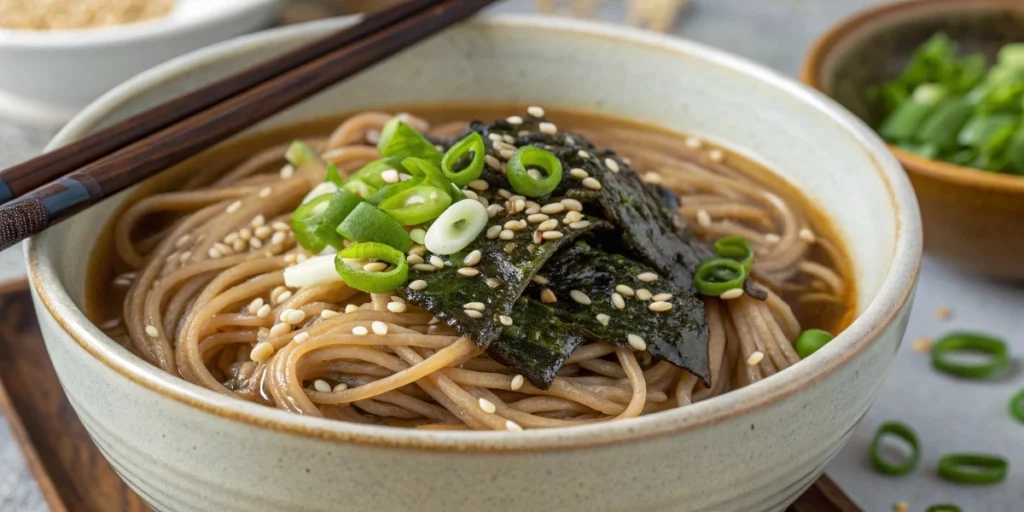
PART 9: Storage, Cooking Tips & Meal Planning with Buckwheat
How to Cook Buckwheat Perfectly Every Time
Whether you’re new to cooking with groats or experimenting with flour, understanding how to prep your ingredients is key to mastering buckwheat recipes. Thankfully, it’s a fast-cooking seed that’s simple to prepare with minimal effort.
Here’s how to cook whole buckwheat groats:
- Rinse thoroughly under cold water to remove any dust or starch.
- Optional: Soak for 30 minutes to reduce cooking time and improve digestibility.
- Use a 2:1 ratio of water to buckwheat. Bring to a boil, then simmer covered for 10–12 minutes.
- Fluff with a fork, season, and serve.
Toasting the groats before boiling creates a nuttier flavor, often used in Eastern European buckwheat recipes like kasha. Just toss dry groats in a dry skillet until fragrant and golden, then cook as usual.
Buckwheat flour can be used in baking, batter, or even to thicken soups—just make sure it’s stored in a cool, dry place to preserve freshness.
Learn more about healthy egg white burger buns you can meal prep alongside buckwheat patties or bowls.
Weekly Meal Prep Ideas Using Buckwheat
Because it’s quick-cooking, protein-rich, and keeps well in the fridge, buckwheat is perfect for batch-cooking. You can easily create several meals in advance using just a cup of dry groats.
5-Day Buckwheat Meal Plan:
| Day | Meal Idea | Description |
|---|---|---|
| Mon | Buckwheat Porridge | With banana, cinnamon, and almond milk |
| Tue | Grain Bowl | Buckwheat, roasted chickpeas, spinach, tahini |
| Wed | Buckwheat Salad | Cucumber, tomato, feta, olive oil |
| Thu | Stir-Fry Base | Use cooked buckwheat in place of rice |
| Fri | Sweet Pancakes | With buckwheat flour, egg, and maple syrup |
Double your cooked groats at the start of the week, then use them across multiple meals. This approach not only saves time—it also ensures you get the full nutritional benefits of your favorite buckwheat recipes throughout the week.
FAQ About Buckwheat Recipes
What is the best way to eat buckwheat?
The best way to eat buckwheat depends on your goals. If you’re after energy and fiber, try cooked buckwheat groats in porridge or grain bowls. For convenience, buckwheat flour works well in pancakes, muffins, or crepes. Toasting groats before cooking adds a nutty flavor that’s perfect for savory dishes.
What can I make out of buckwheat?
You can create dozens of delicious and healthy buckwheat recipes, including bread, pancakes, soba noodles, porridge, granola, and even desserts like brownies or energy balls. Buckwheat also makes a fantastic base for stir-fries, salads, and veggie burgers.
What are the pros and cons of buckwheat?
Pros: It’s gluten-free, high in fiber and plant-based protein, easy to cook, and environmentally sustainable.
Cons: Some people may develop buckwheat allergies. It also contains phytic acid, which can reduce mineral absorption if overconsumed without proper prep.
Is buckwheat as healthy as oatmeal?
Yes, and in some areas, even more so. Buckwheat has more fiber, protein, and magnesium than oatmeal. It’s also lower on the glycemic index and naturally gluten-free, making it a great alternative for those with dietary restrictions.
Is buckwheat healthier than rice?
Compared to both white and brown rice, buckwheat generally has more protein, fiber, antioxidants, and a lower glycemic index. That makes it a smarter choice for blood sugar control, satiety, and nutritional density.
Conclusion
Whether you’re baking bread, whipping up breakfast bowls, or planning your weekly meals, buckwheat recipes offer a flexible, healthy, and flavorful solution for every dietary need. With its powerful nutrient profile, fast cook time, and global culinary versatility, buckwheat deserves a permanent spot in your kitchen. Try a few of the ideas above, and you’ll quickly see why this ancient seed is having a well-deserved comeback.
Looking for more creative ideas? Discover our full list of buttermilk recipes to pair beautifully with your next buckwheat bake.
join us in
Print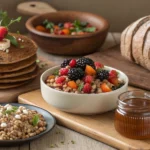
Buckwheat Recipes That Will Change Your Health Game in 2025
- Total Time: 35 minutes
- Yield: 4 servings 1x
Description
Discover the versatility of buckwheat with these wholesome, gluten-free recipes for every meal—from hearty breakfasts to satisfying dinners and sweet treats.
Ingredients
- 1 cup buckwheat flour
- 1 cup buckwheat groats
- 2 eggs or flax eggs
- 1 cup milk or plant-based alternative
- 2 tbsp coconut oil
- 1 tbsp baking soda + 1 tbsp vinegar
- Honey or maple syrup (optional)
- Assorted vegetables (for stir-fry or salad)
- Spices: cinnamon, vanilla, garlic, salt
- Optional add-ins: berries, nuts, seeds, dark chocolate chips
Instructions
- For breakfast pancakes or waffles, mix buckwheat flour with eggs, milk, coconut oil, and leavening. Cook on a griddle or waffle iron until golden.
- To make porridge, simmer buckwheat groats in milk with banana and vanilla until creamy.
- For granola, roast groats with coconut oil, honey, nuts, and cinnamon until crisp.
- Cook savory pilaf by sautéing onion and garlic, then add groats and broth. Simmer until fluffy, add spinach or mushrooms.
- Use cooked groats in salads with roasted veggies, feta, and lemon dressing.
- For bread, combine buckwheat and almond flour, psyllium husk, baking soda, vinegar, water, and salt. Bake until set.
- Prepare sweet snacks like brownies or muffins using buckwheat flour, cocoa, banana, eggs, and sweetener.
- Make crepes or cookies with buckwheat flour, milk, eggs, and optional flavorings like vanilla or peanut butter.
- To store, keep groats or flour in a cool, dry place and rinse groats before cooking.
- Use buckwheat for weekly meal prep by cooking a batch and adding it to various meals throughout the week.
Notes
Buckwheat is a gluten-free, high-protein seed ideal for sweet or savory dishes. Toast or soak groats before cooking for better digestion and flavor.
- Prep Time: 15 minutes
- Cook Time: 20 minutes
- Category: Healthy Recipes
- Method: Mixed Preparation
- Cuisine: Global
Nutrition
- Serving Size: 1 portion
- Calories: 320
- Sugar: 4g
- Sodium: 150mg
- Fat: 12g
- Saturated Fat: 5g
- Unsaturated Fat: 6g
- Trans Fat: 0g
- Carbohydrates: 42g
- Fiber: 5g
- Protein: 8g
- Cholesterol: 0mg
Keywords: buckwheat, gluten-free, healthy, breakfast, dinner, baking
